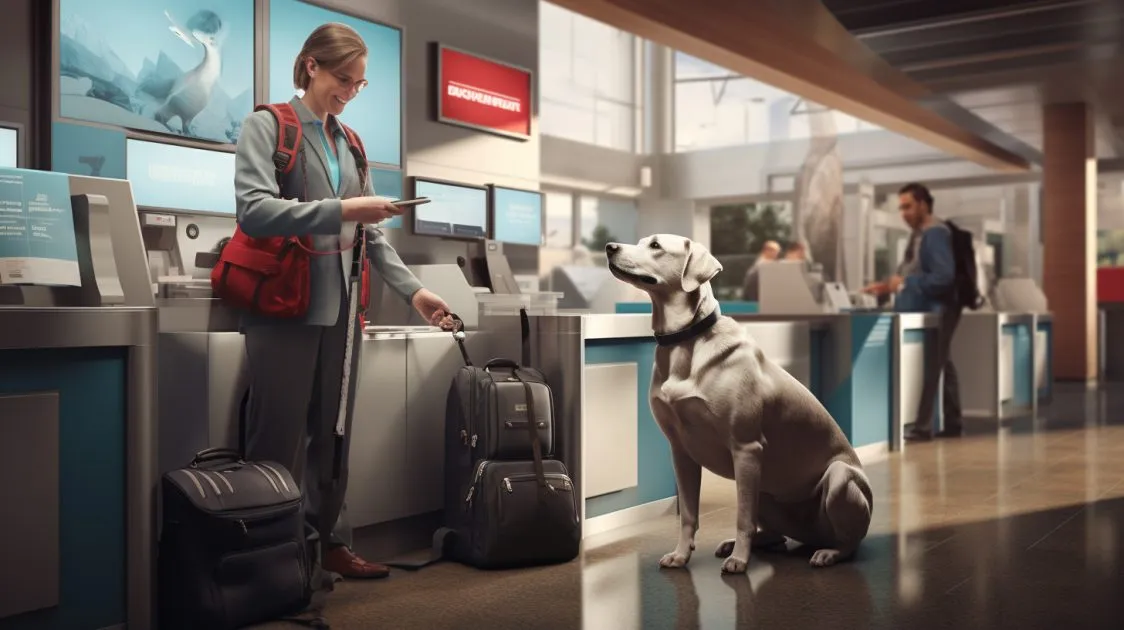Table of Contents
Boarding a diabetic dog can be daunting for pet owners, but it doesn’t have to be. At our boarding facility, we understand the unique needs of diabetic pets and are equipped to provide them with the special care and attention they require.
When boarding diabetic dog with us, you can have peace of mind knowing that our experienced veterinary staff is trained in administering insulin injections and managing the medical needs of diabetic patients. We take the responsibility of caring for your furry family member seriously.
Our boarding kennels are designed to accommodate special needs pets, including diabetic animals. We provide heated floors for extra comfort and ensure that your dog receives the proper insulin dosage at the appropriate times. Our compassionate kennel staff will closely monitor your dog’s condition and provide any necessary veterinary care or medical attention.
To make a boarding reservation for your diabetic dog, we require proof of vaccination and a complete medical history. This helps us understand your dog’s specific needs and ensure they receive the right level of care during their stay.
Don’t let your dog’s diabetic condition prevent you from enjoying a worry-free vacation or business trip. Choose our boarding services for specialized care, peace of mind, and compassionate attention for your diabetic dog.
So grab your baton and get ready to learn the ABCs of boarding a diabetic dog!
Key Takeaways Of Boarding Diabetic Dog
- Consult with a veterinarian before planning a trip with a diabetic dog to discuss concerns and questions about managing the dog’s diabetes while traveling.
- Prepare a detailed care plan with feeding, exercise, and blood sugar monitoring instructions, including emergency contact information for the vet and nearby clinics.
- Research and choose a boarding facility experienced in caring for diabetic dogs, ensuring they can accommodate their specific dietary needs and providing clear instructions to the boarding staff.
- Stay in touch with the boarding facility during the trip to check on the dog’s well-being and provide updates, reflecting on the experience to make improvements for future trips.
Understanding the Needs of a Diabetic Dog

You need to understand the specific needs of your diabetic dog, so you can provide them with the care and attention they deserve. Managing the dietary needs of a diabetic dog is crucial. You must ensure that their meals consist of high-quality, balanced food low in sugar and carbohydrates.
Regular feeding times are also essential to help regulate their blood sugar levels. Additionally, exercise is vital for a diabetic dog. It helps them maintain a healthy weight and improves their insulin sensitivity. However, it’s important to consult with your veterinarian before starting any exercise routine. They can guide the appropriate level and type of exercise for your diabetic dog.
Consult with Your Veterinarian
Before embarking on your adventure, have a heart-to-heart with your vet to ensure your furry friend is in tip-top shape. Regular check-ups are crucial for managing your diabetic dog’s health, especially when planning a trip.
During the consultation, discuss any concerns or questions about managing your dog’s diabetes while traveling. Your vet can provide valuable tips and advice to make the journey smooth. Some important topics include proper insulin administration, consistent feeding schedules, and monitoring blood glucose levels.
Pack Essential Medical Supplies
Pack all the necessary medical supplies for your furry friend’s journey to ensure their health and well-being. It’s crucial to bring enough medication for the entire trip, including any insulin glucose monitoring kit or other drugs your diabetic dog needs.
Remember to pack extra supplies in case of emergencies or unexpected delays. Additionally, ensure you have the contact information for your veterinarian and any emergency clinics in the area you’ll be visiting. You can quickly reach out for assistance if any concerns or issues arise.
Prepare a Detailed Care Plan

Creating a detailed care plan is essential to ensure your furry friend receives proper care while traveling. The care plan should include specific instructions for feeding, exercising, and monitoring their blood sugar levels. Here are four key items to include in your care plan:
- Determine dietary restrictions: Consult with your veterinarian to determine the specific nutritional needs of your diabetic dog. Include a list of approved foods and limits to ensure they receive proper nutrition during the trip.
- Outline emergency contact information: Include the contact details of your veterinarian and any emergency veterinary clinics near your destination. This will help ensure immediate assistance if any health issues arise during the journey.
- Specify exercise requirements: Detail the type and amount of exercise your diabetic dog requires. This will help maintain their overall health and manage their blood sugar levels while traveling.
- Incorporate medication schedules: If your furry friend requires medication, include a clear program outlining when and how to administer it.
With a detailed care plan, you can research boarding facilities that accommodate your diabetic dog’s needs.
Research Boarding Facilities
Researching different facilities that can accommodate the specific needs of your furry friend with diabetes is important in ensuring their well-being while you are away. Start by conducting thorough research on boarding facilities with experience caring for diabetic dogs.When boarding a diabetic dog, it is important to consider additional care and medical needs.
Boarding fees for diabetic pets may include an extra charge due to the specialized care required. Canine guests with diabetes may require regular monitoring of their blood sugar levels and administration of insulin. It is essential to provide the boarding facility with all necessary information regarding the dog’s medical care, including any medications or dietary restrictions. Prior to boarding, make sure that the dog has received the initial vaccine and is up to date on all required vaccinations. This ensures the safety and well-being of all pets in the boarding facility.
Look for facilities that have staff trained in diabetes management and are knowledgeable about administering insulin and monitoring blood sugar levels.
Choose a Boarding Facility Experienced with Diabetic Dogs
Choosing a boarding facility experienced in caring for dogs with diabetes can provide the necessary expertise and peace of mind, but how can you ensure your furry friend will receive the best care while you’re away? Here are some tips to help you make the right choice:
- Benefits of hiring a professional pet sitter:
- They have experience in handling diabetic dogs and can administer insulin effectively.
- They can monitor your dog’s blood sugar levels and adjust their diet accordingly.
- Tips for managing your diabetic dog’s diet:
- Ensure the boarding facility can accommodate your dog’s specific dietary needs.
- Provide clear instructions on portion sizes and feeding schedules.
Provide Clear Instructions to the Boarding Staff
When instructing the boarding staff, you must communicate your diabetic dog’s specific care requirements to ensure their well-being while you’re away.
Provide clear communication about their feeding schedule, the type and amount of insulin required, and any special accommodations they may need.
Ensure to include information about their exercise needs and any signs of hypoglycemia or hyperglycemia to watch out for.
Additionally, provide detailed instructions on how to handle any emergencies or complications that may arise.
Monitor Blood Sugar Levels Regularly
Keeping a close eye on your furry companion’s blood sugar levels regularly is vital, ensuring their well-being and peace of mind. Regular monitoring of blood sugar levels is crucial for managing diabetes in dogs.
Exercise plays a significant role in regulating blood sugar levels, so it’s important to provide your diabetic dog with regular physical activity. Taking your dog for daily walks or engaging in other forms of exercise can help lower blood sugar levels and improve overall health.
Maintain a Consistent Feeding Schedule

Consistency in their feeding schedule is key to ensuring optimal blood sugar management for your furry companion. Maintaining a routine and managing insulin levels are crucial for your diabetic dog’s well-being. Feeding your dog at the same time each day can help stabilize their blood sugar levels and prevent spikes or drops that could harm their health.
To help you visualize the importance of a consistent feeding schedule, here is a table that outlines an example of a typical day for a diabetic dog:
| Time | Meal | Food Type | Insulin Administration |
|---|---|---|---|
| 7:00 am | Breakfast | Low-carb dog food | Insulin injection |
| 12:00 pm | Midday Snack | High-protein treat | None |
| 5:00 pm | Dinner | Balanced dog food | Insulin injection |
| 8:00 pm | Evening Snack | Low-sugar treat | None |
| 10:00 pm | Bedtime Snack | High-fiber treat | None |
Following a consistent feeding schedule like this can help regulate your dog’s blood sugar levels and ensure they receive the necessary insulin at the appropriate times.
Keep Your Dog Active and Engaged
Keeping your dog active and engaged helps with their physical well-being and stimulates their mind.
Here are a few ways to accomplish this:
- Regular exercise: Take your dog for walks or play games like fetch to keep them moving.
- Puzzle toys: Use interactive toys that require your dog to problem-solve and work for treats.
- Training sessions: Regular training sessions keep your dog mentally stimulated and reinforce good behavior.
- Nose work: Hide treats around the house or play scent-based games to challenge your dog’s senses.
Communicate with the Boarding Facility During Your Trip
When you’re away, staying in touch with the boarding facility helps you feel right there with your furry friend, like a lifeline connecting you to their well-being. Communication is key when it comes to boarding your diabetic dog.
Before your trip, provide the boarding facility with all the necessary information about your dog’s diabetes management, including their feeding schedule, insulin injections, and any other medication they may need.
Review and Reflect on the Boarding Experience

After returning home, please take a moment to reflect on the boarding experience and envision your furry friend happily wagging their tail upon your arrival. Reflecting on the emotional impact of boarding can help you better understand your dog’s experience and make improvements for future trips. Feeling a mix of emotions, from relief to guilt, is normal when leaving your dog behind.
To help manage stress, it’s important to follow best practices. These include choosing a reputable boarding facility, providing clear instructions and contact information, and asking for updates during your trip. To evoke emotion in the audience, imagine your dog’s joy and excitement when you reunite. Here’s a table to summarize the feelings and best practices for managing stress during the boarding experience:
| Emotions | Best Practices |
|---|---|
| Relief | Choose a reputable facility |
| Guilt | Provide clear instructions |
| Excitement | Ask for updates during your trip |
By reflecting on the boarding experience, you can ensure your dog’s well-being and peace of mind for future trips.
Frequently Asked Questions
How do I find a boarding facility experienced in caring for diabetic dogs?
Finding a qualified boarding facility for a diabetic dog can be like searching for a needle in a haystack. To narrow your options, ask about their experience and qualifications in caring for diabetic dogs.
What should I do if my dog’s blood sugar levels become too high or too low while they are being boarded?
If your dog’s blood sugar levels become too high or too low while boarding, it’s crucial to manage them properly. Please communicate with the facility about your dog’s condition and provide them with instructions on how to handle any emergencies.
Can I provide my dog’s regular food and treats to the boarding facility?
You can make your diabetic dog feel at home by finding a boarding facility accommodating their special dietary needs. Ensure you provide regular food like dog’s paw and treats to keep them happy and healthy while away.
How often should I communicate with the boarding facility during my trip?
Communicate with the boarding facility regularly to stay updated on your dog’s health. Ask them to provide updates on your dog’s well-being and any changes in their condition. This will give you peace of mind while you’re away.
BEFORE MY TRIP, can I visit the boarding facility to ensure it meets my dog’s needs?
Visiting before your trip is a great idea to ensure the boarding facility meets your dog’s needs. 80% of pet owners see the facility beforehand to ensure their furry friend is well cared for.
Conclusion
In conclusion, now that you’ve learned the ABCs of boarding a diabetic dog, you can plan a trip with your furry companion. Understanding their needs and consulting with your veterinarian can ensure their well-being while you’re away.
Remember to research boarding facilities, maintain a consistent feeding schedule, and keep your dog active and engaged. Packaging essential supplies and preparing a detailed care plan are also important.
During your trip, communication with the facility is crucial. You’ll appreciate the peace of mind of knowing your diabetic dog was well taken care of.
Happy travels!
Reader Advisory: This article, aimed at informational purposes, does not replace professional veterinary advice. While we aim for accuracy, we make no guarantees regarding the completeness or reliability of our content. Always consult a veterinarian before altering your dog’s diet or nutrition.




